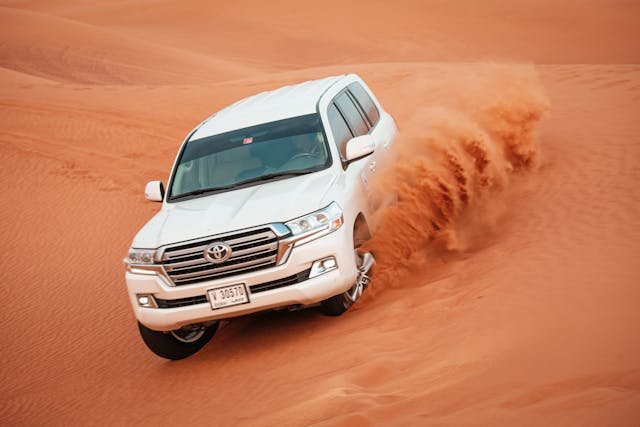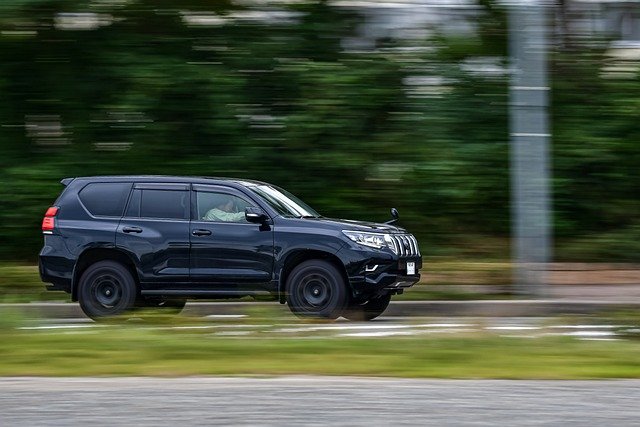For the longest time, the Toyota Land Cruiser was the only off-road vehicle in the Toyota portfolio that was really unique. It has provided a luxurious, bank vault-like interior for decades, all set on a chassis built to survive everything except a direct strike from a nuclear bomb. But the new Toyota Land Cruiser is not the same; it shares a basis with the new Toyota 4runner, Toyota Tacoma, Toyota Tundra, Toyota Sequoia, and Lexus GX instead of being exclusive to the American market. Does the recently released Toyota SUV feel as unique as the previous model? Although the answer is no, the SUV is still quite appealing.
Because the Land Cruiser brand signifies various things to different people in different places, there is a great deal of controversy over whether the new Toyota Land Cruiser is a “Real Land Cruiser.” For those used to the less expensive Land Cruiser “Prado” that is sold abroad, the new car seems completely genuine. However, it seems a little weird in the United States, where we’re accustomed to the Land Cruiser 200 Series, 100 Series, and 80 Series before that. Unless you consider it a substitute for the Lexus GX, which was constructed on the Prado chassis marketed internationally, in which case it feels appropriate.

So that’s what all of the reviewers at Toyotathon last week had to deal with: How do you evaluate this Land Cruiser? Do you evaluate it as a new mid-size off-road SUV that’s available in the US market, or do you evaluate it in relation to the Land Cruisers that just came before it? I carried out both.
The New Land Cruiser: What Is It?
Land Cruiser II
A few years back, Toyota was faced with a problem. With ever-tougher emissions regulations, “is there a place for body-on-frame vehicles”? In an interview, Toyota Tacoma head engineer Sheldon Brown described it to me as “an existential crisis [for] the company” due to the increasing pressure to achieve the Corporate Average Fuel Economy (or CAFE, as it’s known here) regulations globally. “It was imperative that we [developed our body-on-frame vehicles] in an astute manner,” he informed me, emphasizing the necessity to minimize the overall expenditure that the firm could need for electrification in these unpredictable times. He informed me that Toyota’s body-on-frame approach need to be as efficient as feasible if we were to succeed.
The end result was the TNGA-F platform, which is currently used to power the five Toyota vehicles you see above: the Lexus GX, Sequoia, Tacoma, 4Runner, Tundra, and Land Cruiser. Among other things, it makes use of tailor-welded blanking, which allows a single frame to serve a variety of purposes without adding a lot of extra weight. (More information on it may be found here; it entails welding stronger, thicker steel pieces into specific areas of the frame as required).
The 4Runner, Tundra, and Sequoia were all around for almost 15 years, and the Taco had been there since 2016 but those bones were rather old. He noted that “every time we redid a platform, you really need to look at the life of that platform.” Although it’s evident that those platform investments paid off, Toyota created One Platform To Rule Them All in order to reduce risk since it’s hard to predict what technological or political developments may ultimately force a move toward electric vehicles.
It is a steel body-on-frame chassis with a coil-sprung, independent double-wishbone front suspension and a coil-sprung, or leaf-sprung, five-link solid rear axle seen in the basic Tacoma. The Land Cruiser’s frame is comparable to the Tacoma TRD Pro’s, as seen by the two images just above, which show the same frame pitch (width), front and rear suspension setup, powerplant, and more.

The 2.4-liter turbocharged hybrid engine, which produces 326 horsepower and 465 lb-ft of torque, is the same engine used in the Tacoma and the soon-to-be 4Runner. It is mated to an eight-speed automatic gearbox. The electric motor of the hybrid system is positioned in between the gearbox and engine.
Given that the 4Runner has the same fundamental frame structure, suspension, and engine, what is the purpose of the new Land Cruiser in comparison to the 4Runner?
Sheldon Brown, the chief engineer of the Tacoma, told me that people have a certain kind of brand loyalty because they like the Land Cruiser name. Furthermore, another Toyota representative said that the mid-size sector is quite large and that the business “[doesn’t] see cannibalization, per se.” There is plenty area for two offers in this segment.
Designed for a different, maybe older market than the 4Runner, the Land Cruiser is intended to be more sophisticated and have distinctive appearance. And I get it, for the most part. That is, until I started using the 1958 model.